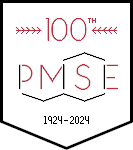Dr. Jonathan W. Martin of the National Institute of Standards and Technology will receive the Roy W. Tess Award in Coatings for 2006. The announcement was made today by the Officers and the Award Committee of the Division of Polymeric Materials: Science and Engineering (PMSE) of the American Chemical Society.
Dr. Martin is recognized as one of the world’s leading experts in the area of service life prediction of polymeric materials. Dr. Martin has published over 120 papers. As Director of the NIST/Industry Consortium on Coating Service Life Prediction, he organized 3 major symposia on service life prediction and edited 3 books based on these symposia for the American Chemical Society and the Federation of Societies for Coatings Technology. He has also presented numerous keynote lectures and plenary talks at national and international conferences, including 4 Gordon Conferences, the Coating Science International Symposium and the European Weathering Symposium.
Dr. Martin earned his B.S. and M.S. degrees in Materials Science from Pennsylvania State University in 1968 and 1971 respectively. He earned his Ph.D. in Materials Science from Washington State University in 1979. In 1978, he joined the Polymeric Materials Group in the Building and Fire Research Laboratory at NIST. In 1994, Dr. Martin became the Group Leader for the Polymeric Materials Group. He is responsible for the research of 35 group members and in addition to directing the Coatings Service Life Consortium, he is responsible for two other NIST/Industry consortia, the Polymer Interphase Consortium and the Sealants Service Life Prediction Consortium.
Dr. Martin’s main research interest is implementing a reliability-based methodology for predicting the weathering service life of polymeric materials. Implementation has many aspects including developing novel metrologies for characterizing coatings, deriving mathematical models for characterizing degradation and for linking field and laboratory exposure results as well as designing and creating high-throughput and informatics systems capable of improving measurement and data analysis efficiency. Recent progress toward this goal include the analysis of the validity of reciprocity and additivity laws for polymer degradation, specific models linking field and laboratory exposure environments, designing and building a novel laboratory exposure device, called the NIST SPHERE, that essentially removes all known sources of experimental error from the exposures, and, finally, instrumenting and validating models for characterizing field exposure environments in near real-time and in the same way that shese environments are characterized in the laboratory. He has also initiated an extensive research program in nano-physical and nano-chemical measurements for characterizing polymer degradation.
Dr. Martin has received numerous awards for his research. He has received an R&D 100 award for his research on the roughness of metallic surfaces using infrared thermography. From the Federation of Societies for Coatings Technology, Dr. Martin has received the 1990 Best Corrosion paper award, the 1995 Technical Focus Speaker Award, the 2003 second place Roon Ward, the 2004 first place Roon Award, the 2004 John Gardon Award and the 2006 Mattiello Lecture Award. From the US Department of Commerce, he has received a Bronze Medal Award in 1996 and the William P. Slichter Award in 2004.
Dr. Martin will receive the Tess Award from Dr. Ronald DeMartino, Chair of the PMSE Division, on Monday, September 11, 2006 during the 232th Meeting of the American Chemical Society in San Francisco, CA. Dr. Martin will present an Award Address at that time. An evening reception sponsored by the PMSE Division will follow the Award Symposium.
The Tess Award is presented annually by the Division of Polymeric Materials: Science and Engineering in recognition of outstanding contributions to coatings science and technology. It is funded by a grant to the Division from Dr. and Mrs. Roy W. Tess. The purpose of the award is to encourage interest and progress in coatings and recognize significant contributions to the field. The Award consists of a plaque and a cash prize.




